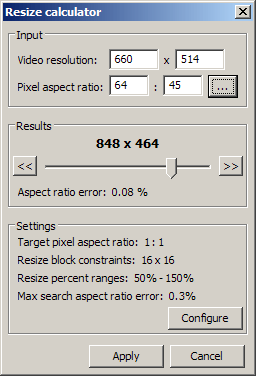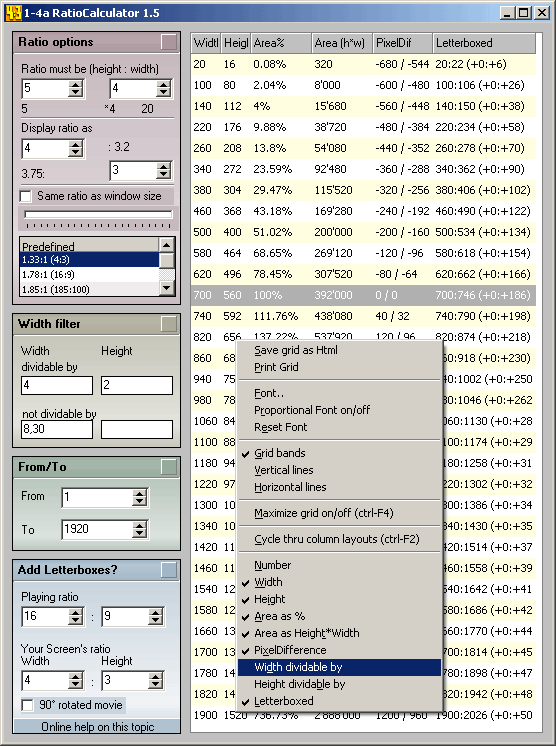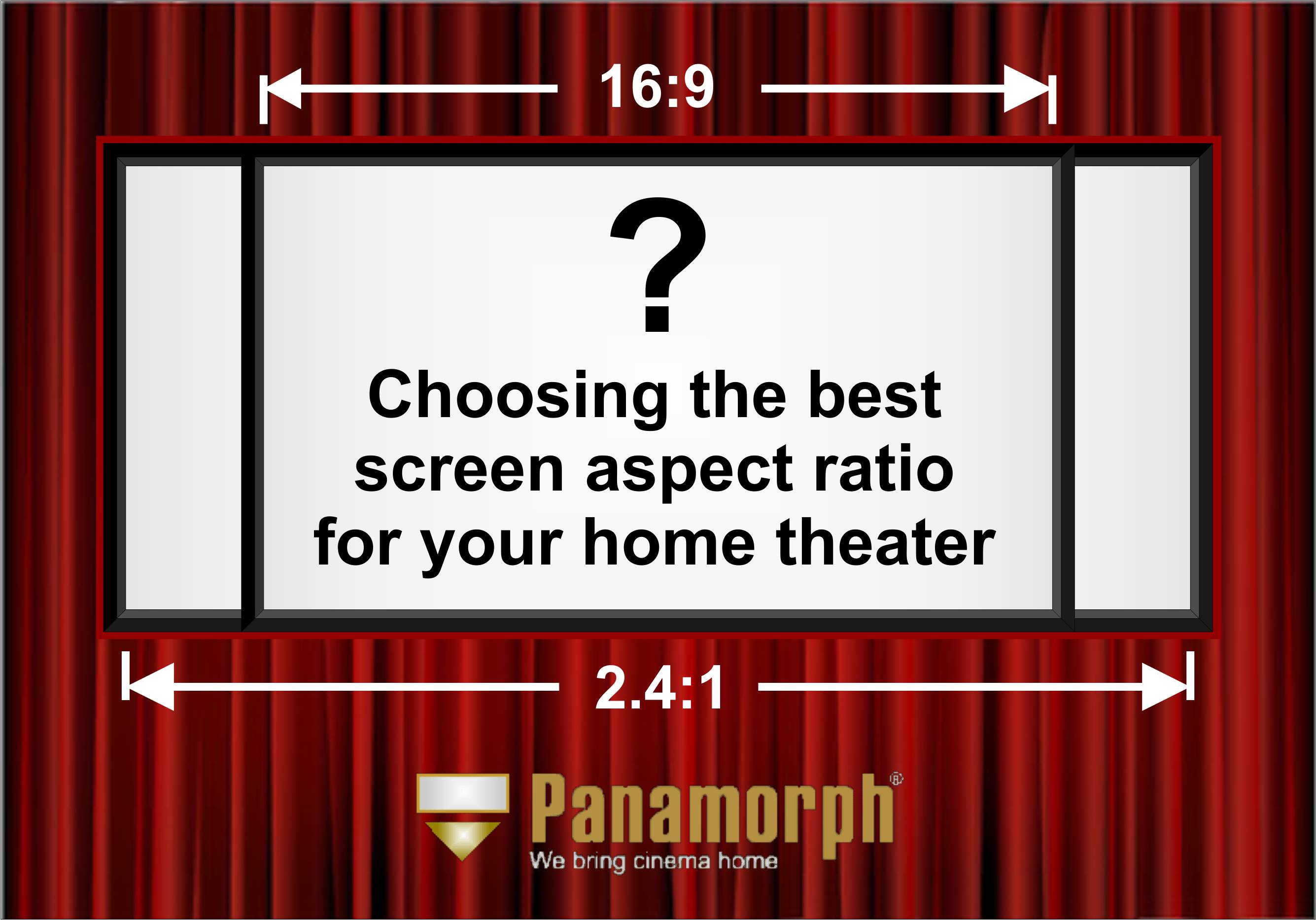

Moreover, the 16:9 format is natively supported in DVD format and is further used on Vimeo, YouTube, and other popular video websites attracting a very high view rate.Īdditionally, a 16:9 aspect ratio improves TV watching by offering more content on-screen.Īlso, the aspect ratio is clearly specified in the video production by mentioning the widths relative to height, such as 16:9. Practically all the television broadcasts were using this format by the end of 2005. The ratio is obtained when you divide vertical pixels by horizontal pixels (in numbers), containing 1920 vertical lines and 1080 horizontal lines of resolution.įor reference, a 16:9 aspect ratio on television simply means that the horizontal viewing area is wider (16) than the vertical viewing area (9).
#16 9 ASPECT RATIO CALCULATOR FULL#
The 16:9 aspect ratio is widely used in HDTV, non-HD TV, Full HD, and analog television screens. However, they were not ideal for high-definition video displays.įinally, in 1917, the 16:9 aspect ratio was made the standard format for movies with the television industry following in its footsteps in 1930. It was square in shape, which was 33% wider than its height, and was generally known as a square monitor.

However, in the early days, almost all televisions and monitors had a 4:3 aspect ratio. Also, old computers have a 4:3 aspect ratio while mainstream media is displayed mostly in a 16:9 ratio. The 19:9 ratio in phones is different from the 16:9 horizontal ratio in the modern laptop screens.

Additionally, Cinemascope is a 2.35:1 extra wide aspect ratio used for making films for cinemas.Īspect ratios are important because there are many standards. The list also includes 3:2 aspect ratios suitable for sensors in devices like phones and cameras for shooting different media. Now, if you are wondering what widescreen is, in layman’s terms it is simply a TV that has a wider screen as compared to other televisions. The most prevalent aspect ratios are 4:3, also known as 1:3:3:1 or full screen, and 16:9, sometimes known as 1:78:1 or widescreens. The ratio is usually used in camera sensors, television displays, as well as in printed and digital media. The comparable relation between the width and height of a screen or video display is known as the aspect ratio. Well, if you haven’t, today, through this article, let us help you explore everything about this ratio (and other popular ratios) along with its history, resolution, and application in detail. Have you given a thought as to why 16:9 is popular among YouTubers when it comes to uploading videos? And what makes it relevant even today? Below the calculator, there are more details about this format and common resolutions.īesides, there is a similar calculator for defining the dimensions of the HD 16:9 aspect ratio.Undoubtedly, HD TVs look stunning, but have you ever wondered about the aspect ratio that’s involved in order to have this amazing experience? The best part is that the second value is instantly updated right after you change the first one.

The rest is done automatically by this 4:3 ratio calculator. Open the program and enter the desired width for an image or video. Getting that fantastic full-screen 4:3 aspect ratio is actually very easy. So, chances are high that films and shows you’re watching in the evening have a 16:9 width and height correlation. The latter is attributed to old TVs, while the latest counterparts gave the 16:9 aspect ratio. The list of common presets includes - Custom, HD Video 16:9, Standard Monitor 4:3, Classic Film 3:2, and Cinemascope 21:9.Ĭurrently, the most widely-used values are 21:9, 16:9, and 4:3. Calculate Aspect Ratio has preset values, so the whole calculation process can boil down to several seconds.


 0 kommentar(er)
0 kommentar(er)
